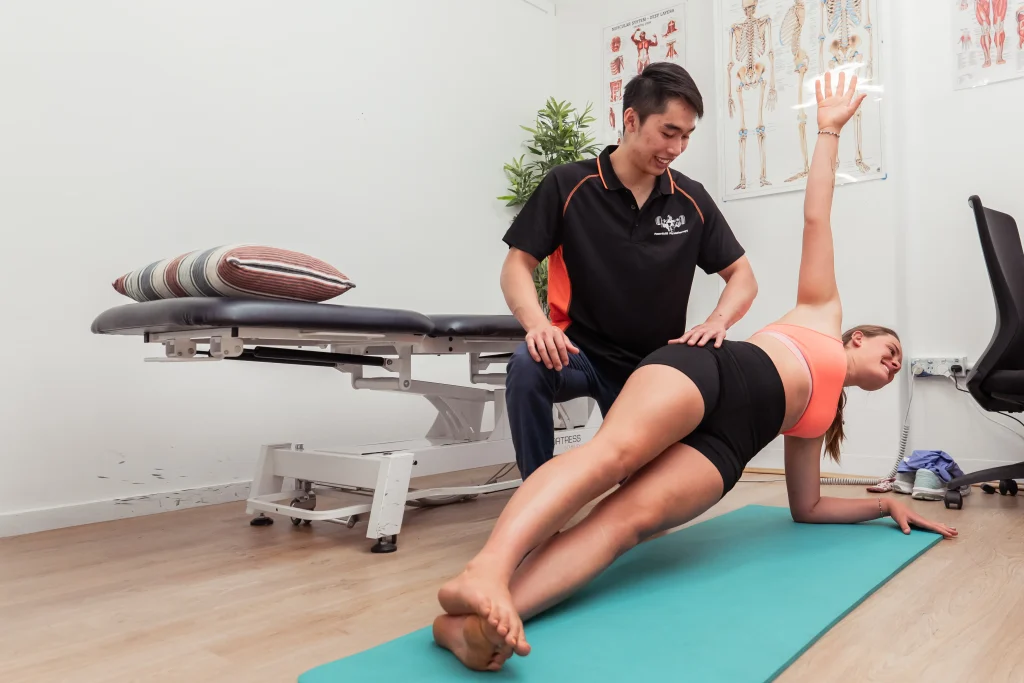
What Is Pelvic Tilt?
The pelvis is the bowl-shaped bone that you feel when you are told to “put your hands on your hips”. A helpful way to understand pelvic tilt/movement is by imagining it as a bowl filled with water.
- If the water spills forward, that’s called anterior pelvic tilt (forward tilt)
- If the water spills backward, that’s called posterior pelvic tilt (backward tilt)
Different muscles influence control forwards and backwards tilting of the pelvis.
- Anterior tilt is performed using the hip flexors and lower back muscles
- Posterior tilt is performed using the glutes, hamstrings, and abdominal muscles
Learning how to find and control these positions can help you move more efficiently, reduce unnecessary strain, and improve how your body performs during exercise and recovery.

Lifting and Strength Training
In strength exercises like squats or deadlifts, your pelvic position changes how your muscles work together.
Certain positions can actually help you lift more weight because they allow your larger muscles, such as the glutes and hamstrings, to contribute more effectively. Depending on the exercise, adjusting your pelvis can also help you target specific muscle groups better, improving the quality of your training.
Even small changes in how you position your hips can completely alter how strong you feel and which muscles are doing the work.
Stretching and Mobility
Your pelvic position also plays an important role in stretching.
Often, people try to stretch their hamstrings or hips but end up feeling it in their back or somewhere else entirely. This usually happens because the pelvis is not positioned in a way that allows the correct muscles to lengthen.
By learning how to position your pelvis correctly, you can make sure you are stretching the intended area and not compensating with other muscles. The right positioning helps you feel the stretch in the right spot, leading to better flexibility and mobility over time.
Core Training

Pelvic position and core activation are closely connected.
In exercises like planks or dead bugs, your pelvic position can reveal whether you are using the right muscles. When your abdominal muscles are working properly, you will be in a posterior pelvic tilt.
Many people perform core exercises easily but do not actually feel their abdominal muscles working. As soon as the pelvic position is corrected, they instantly feel their abs engage and realise how challenging the exercise really is.
Learning this connection helps you get more out of your core training and saves you from wasting time!
Pain and Rehabilitation
In rehabilitation, understanding pelvic movement can sometimes make a big difference in reducing pain and improving function.
For people recovering from back, hip, or knee issues, even small adjustments in pelvic position can sometimes relieve discomfort and make movement feel easier. It can also allow you to perform exercises that once caused pain, helping you progress and rebuild strength faster.
Improving awareness and control of your pelvis builds a stronger foundation for all movement and supports long-term recovery.
How Physiotherapy Can Help
Whether you’re working on strength, mobility, or recovery, understanding your pelvic position can make every exercise more effective. If you’re unsure how to apply these concepts or want to improve your movement control, a physiotherapist can help guide you through the process and tailor a plan that fits your goals.

